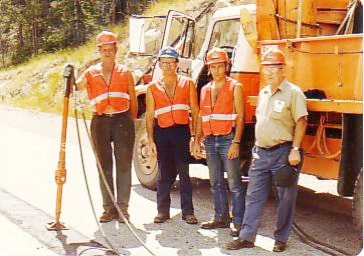The Nelson, Trail and Rossland area of the Kootenay is fast becoming the Pothole Capital of B.C. We fondly look back to an era before 1988 when we had trained and well-equipped Ministry of Transportation and Highways crews out on the highway systems.
In the early spring the crews were fitted with all the personal safety equipment and vehicles that had been fitted and designed specifically for their needs to complete the patching of road potholes. Things like Stanley hydraulic tools consisting of a pavement cutter and compactor, a propane torch to dry out the potholes, sealant to seal the potholes before installing the patch materials. The dump trucks were equipped with all the required rakes, shovels, brooms and asphalt dispensing required to perform the complete operation. There was creativity on the crews, and many times we would see diamond shaped, round and square or triangle shaped completed patches.
The goal was to keep the road surface safe and smooth to prevent premature damage to the steering and suspension systems of all the vehicles that travelled the road systems.
The crews received their training under the auspices of the Ministry of Highways paving branch and the maintenance management branch and the regional maintenance engineer responsible for the area.
In this photo of the patching crew from Rossland — (L-R) Lundy, Williams, Mignault, and the late R.E. Broughton — all these employees had input into the design and installation of the tools required to make the patching truck just right for the operation. All of these fully and specially equipped vehicles were sold for 25 cents on the dollar in auctions that followed the privatization of roads and bridges throughout B.C.
These proud crews would easily repair potholes from one end of district boundaries to the other. We raise our glasses and say thanks to all these caring folks who did the work and have passed on or are now wondering why we have problems getting the simple act of repairing a road pothole completed when it was so easy for these pioneers. These crews did the work easily with a smile on their faces and not looking at a looming pothole unrepaired in today’s system.
R.E. Johnson, Nelson
